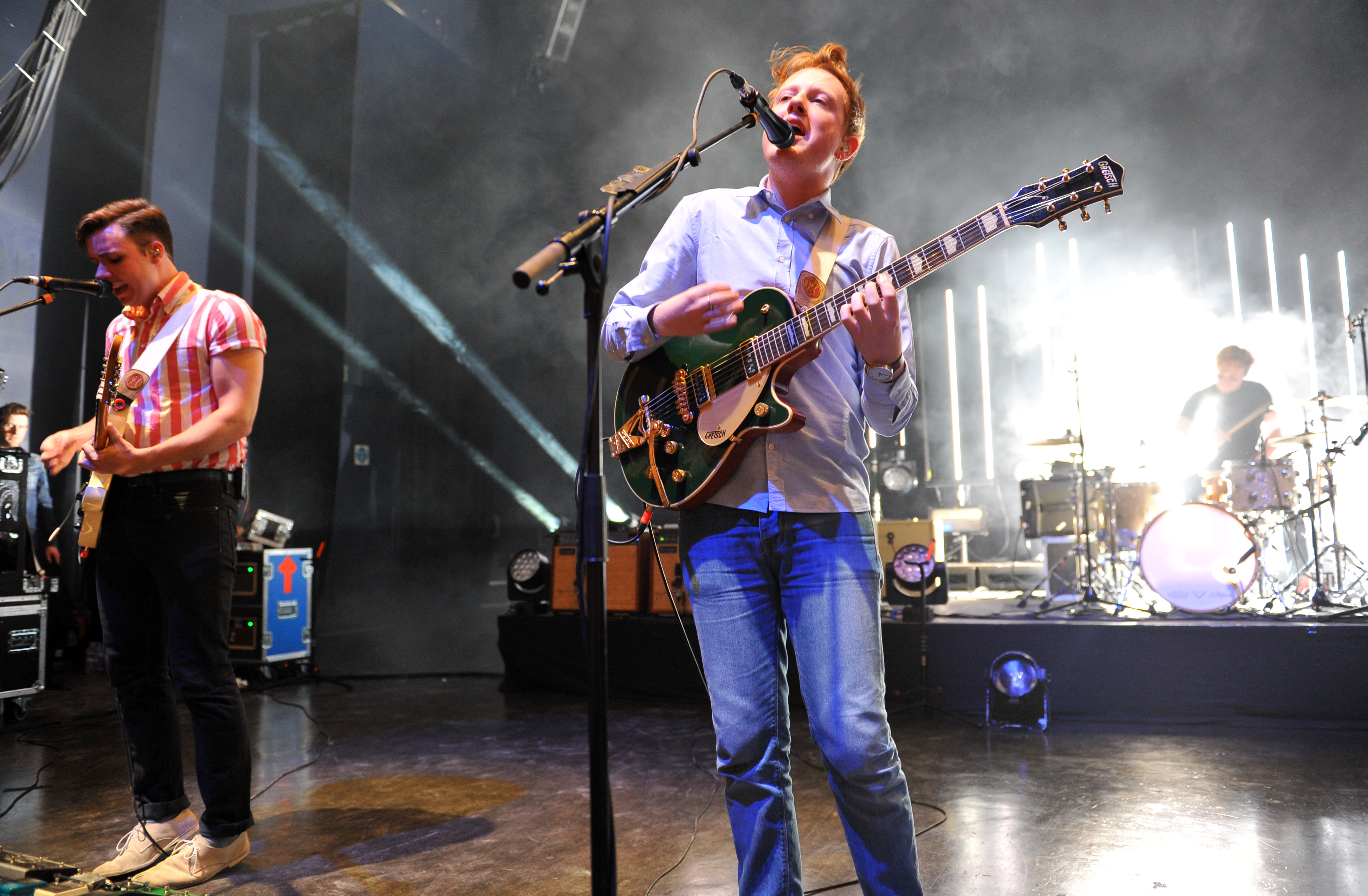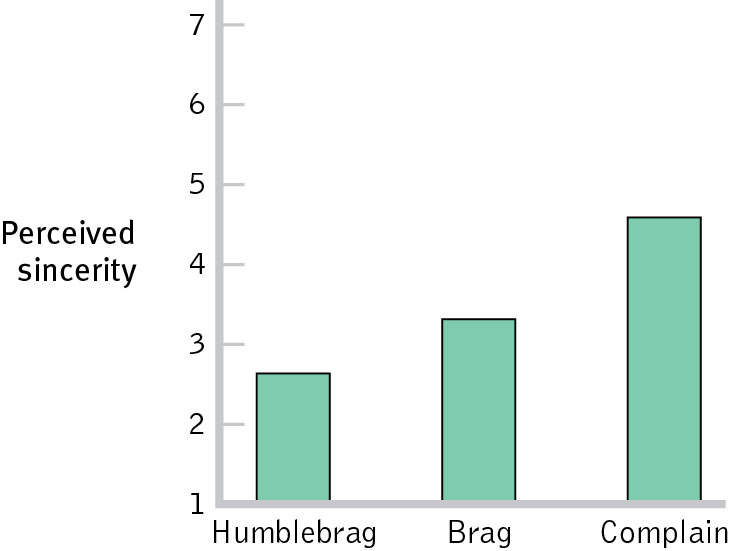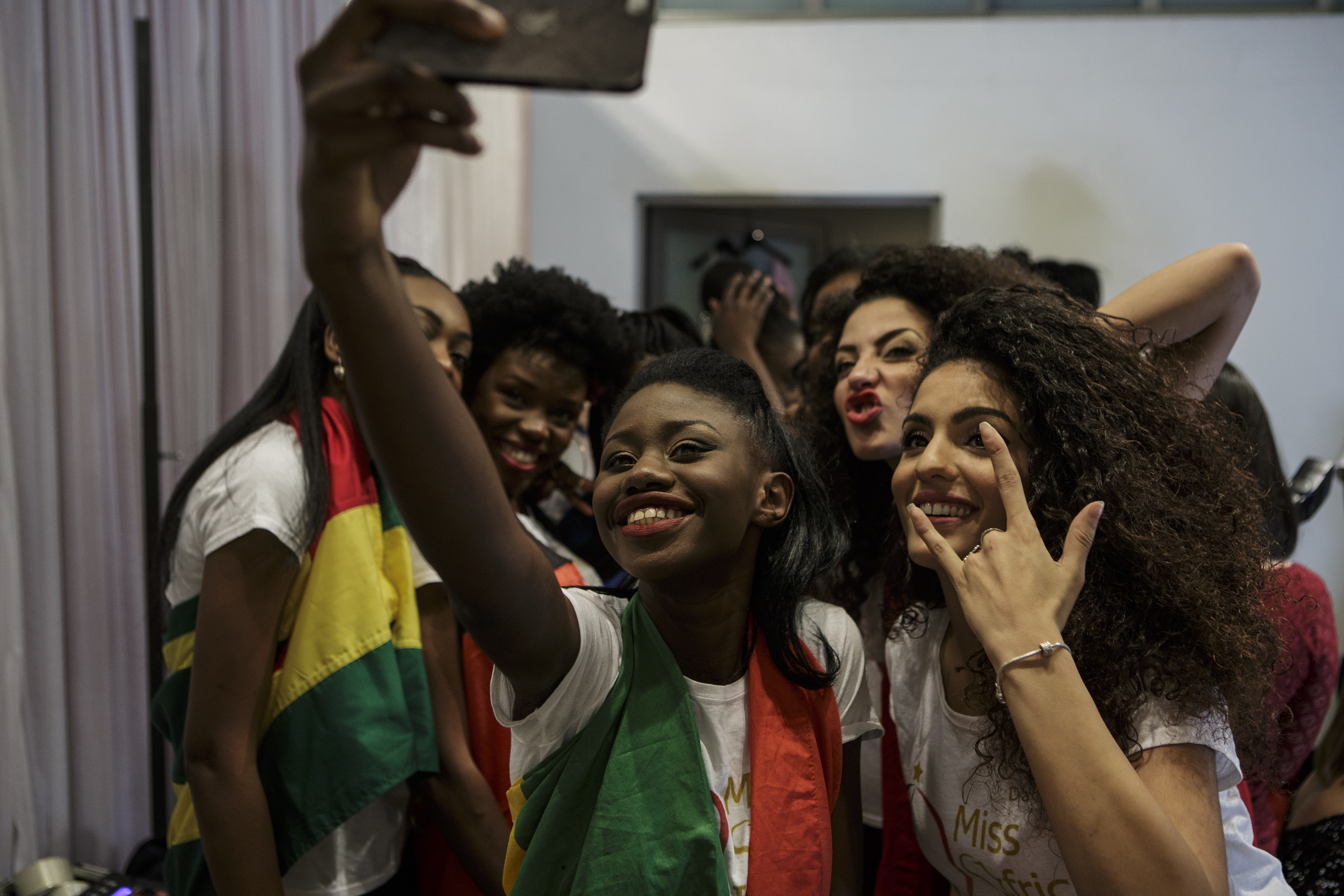Is False Modesty Actually Flattering?
1.1 ONE-WAY BETWEEN-GROUPS ANOVA: IS FALSE MODESTY ACTUALLY FLATTERING?1 of 9
Welcome
Is False Modesty Actually Flattering?
Authors:
Kelly M. Goedert, Seton Hall University
Susan A. Nolan, Seton Hall University
Kaylise D. Algrim, Seton Hall University
Twitter is full of humblebrags, or bragging masked as complaining: “Our song has just come on the radio in our taxi. Awkward!,” Irish musician Sam Halliday (@samTDCC) laments—only to be one-upped by the Singaporean/Texan celebrity Tila Tequila (@OfficialMsTila) talking about her new Lamborghini, “Man this is SO unfair! Why did the lambo dealership not tell me I’d get pulled over at least once a week in this car? Time for a corolla lol!” (Twisted Sifter, 2011).
With social media’s capacity for self-promotion, humblebragging has taken the Internet by storm. Such statements show a bit of surface humility, while also flattering the humblebragger: “Completing a marathon or taking your shoes off after completing a marathon, which is the real win?” The tactic may seem to lessen the negative association with showing off, but the reality may be the opposite. To investigate this issue, a series of studies looked at the effects of humblebragging on social perception (Sezer, Gino, & Norton, 2018).

1.2 ONE-WAY BETWEEN-GROUPS ANOVA: IS FALSE MODESTY ACTUALLY FLATTERING?2 of 9
In a study, participants in a between-groups experiment were randomly assigned to humblebrag, brag, or complain conditions. In the humblebrag condition, participants viewed the following statement (which was an actual Tweet): “I am so bored of people mistaking me for a model.” Participants in the brag condition viewed the same statement without the surface complaining: “People mistake me for a model.” Participants in the complain condition just viewed the statement, “I am so bored.” Participants then rated the targets’ likeability and perceived sincerity on a scale of 1–7, where higher scores indicated higher likeability and perceived sincerity.
This graph shows the mean results for likeability:

1.3 ONE-WAY BETWEEN-GROUPS ANOVA: IS FALSE MODESTY ACTUALLY FLATTERING?3 of 9
This graph shows the mean results for perceived sincerity:

1.4 ONE-WAY BETWEEN-GROUPS ANOVA: IS FALSE MODESTY ACTUALLY FLATTERING?4 of 9
Recall that participants rated the likeability of someone who said: “I am so bored of people mistaking me for a model” (humblebrag); “People mistake me for a model” (brag); or “I am so bored” (complain). The ANOVA results for the effect of condition on likeability ratings sincerity are shown here:
F(2, 298) = 15.02, p < .001, η2 = 0.09
1.5 ONE-WAY BETWEEN-GROUPS ANOVA: IS FALSE MODESTY ACTUALLY FLATTERING?5 of 9
The ANOVA results for the effect of condition on perceived sincerity are shown here:
F(2, 298) = 54.73, p < .001, η2 = 0.27
1.6 ONE-WAY BETWEEN-GROUPS ANOVA: IS FALSE MODESTY ACTUALLY FLATTERING?6 of 9
1.7 ONE-WAY BETWEEN-GROUPS ANOVA: IS FALSE MODESTY ACTUALLY FLATTERING?7 of 9
1.8 ONE-WAY BETWEEN-GROUPS ANOVA: IS FALSE MODESTY ACTUALLY FLATTERING?8 of 9
1.9 ONE-WAY BETWEEN-GROUPS ANOVA: IS FALSE MODESTY ACTUALLY FLATTERING?9 of 9
Earlier, you chose what you found most annoying about social media posts. Now you know the bottom line: If you’re going to brag about something, you might as well be honest about it.

REFERENCES
Sezer, O., Gino, F., & Norton, M. I. (2018). Humblebragging: A distinct and ineffective self-presentation strategy. Journal of Personality and Social Psychology, 114, 52–74. https://doi.org/10.1037/pspi0000108
Twisted Sifter. (2011, May 10). The 50 funniest “humble brags” on Twitter. Twisted Sifter. Retrieved from https://twistedsifter.com/2011/05/funniest-humble-brags-on-twitter/